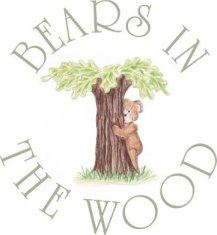
The year 2002 saw celebrations for 100th birthday of the Teddy bear in countries all around the world – but where did it all begin?
There are many stories surrounding the birth of the Teddy bear but there are two that seem to be more widely accepted than most, however, it is unclear whether these tales are fact or merely folklaw. Whilst there is little or no documentary evidence to substantiate these claims, the following stories seem to have been accepted by arctophiles all over the world as fact.
The contenders are based on either side of the Atlantic, and it seems to be the case that the Teddy bear was created simultaneously by Morris and Rose Michtom in Brooklyn, New York and Margarete Steiff and her nephew Richard in Giengen, Germany during 1902.
However, regardless of how the Teddy bear began it cannot be denied that it is not only holding its own in the toy world, with early examples fetching many thousands on the antiques market, it is also making leaps and bounds into the field of collectables. This soft and cuddly creature is loved by the young and old alike and seems set to be going strong in another 100 years and for many years beyond.
The American story ...
On November 16th 1902, a cartoon by political cartoonist Clifford Berryman appeared on the front page of the Washington Post. The cartoon satirised President Theodore Roosevelt refusing to shoot a black bear tethered by a rope. Legend has it that the story accompanying the cartoon told of a poor days hunting had by the President two days earlier whilst in Smedes County, Mississippi, to settle a borders dispute between Mississippi and neighbouring state Louisiana. The day ended with his hosts stunning and capturing a 235 pound female black bear so the President could have his ‘trophy’ kill. The President, however, refused to kill the bear saying that it was unsportsmanlike to kill a captured animal. Written across the cartoon were the words ‘Drawing the line in Mississippi’- which cleverly related the hunting incident to the political dispute.
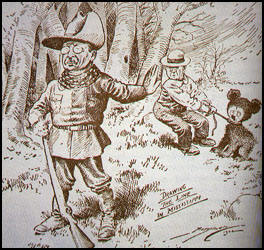
by Clifford K Berryman
When the cartoon ran in the Washington Post it caught the attention of Russian immigrants Morris and Rose Michtom, who at the time ran a small confectionary and stationery shop. Rose made a small jointed bear based on the cartoon; the bear was made from plush material and was stuffed with Excelsior. Mr Michtom displayed the bear, alongside the newspaper clipping, in the window of their shop. The toy sold almost immediately and due to demand the couple continued to make and sell the bears. Realising the potential of this toy, Mr Michtom sent a letter to President Roosevelt asking permission to call the plush bears ‘Teddy’s bears’ and received a hand written reply from the President himself. The reply gave permission to use the name but also said that the President didn’t feel his name would be worth a great deal!!! Unfortunately, the letter cannot be produced to substantiate this claim.

In 1903, Mr Michtom founded the Ideal Novelty and Toy Company, with financial backing from America’s largest toy wholesalers, Butler Brothers. The company at one time employed some 4000 workers and continued to trade, although the name changed to the Ideal Toy Company in 1938, with factories in America, Canada, Australia and Japan until it finally closed in 1984.
The German story ...
Around the same time as the cartoon appeared in the Washington Post in America, Margarete Steiff and her nephew, Richard, were also creating a toy bear in Germany.
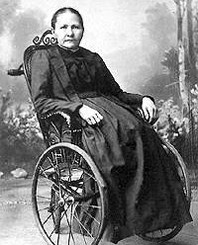
Margarete, who was born in 1847, had suffered from polio as a child which left her confined to a wheelchair. In spite of her disability she became proficient at many forms of needle work and in 1877 she founded her own company making felt underskirts. Eventually she branched out into the toy industry and in 1892 the first Steiff toy catalogue came out. The catalogue featured felt animals, including bears, but the early bear toys were very different as they were representations of wild bears rather the soft cuddly bears that became the Teddy bear. By the time the company was registered with the local chamber of commerce in 1893, the toys were accounting for in excess of two thirds of the annual turnover and so Margarete began to focus solely on the toys.
Legend has it that in 1902, Richard convinced Margarete to design the new bear based on sketches he did of the bear cubs at Stuttgart Zoo. The bear that was created was made from mohair and was jointed with twine, giving it a moveable head and limbs. It was known simply as 55PB – 55cm being the height, the ‘P’ standing for plush and the ‘B’ for beweglich, or jointed.
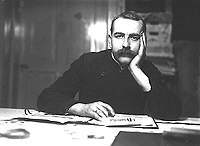 |
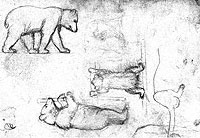 |
Late in 1902, the bear was shipped to New York to be displayed in the Steiff showroom but was returned to Germany early in 1903 as it was initially rejected by the American market for being too expensive, large and heavy. However, the bear was given a second chance at the Leipzig trade fair in March 1903 and received a reprieve at the last minute when Hermann Berg, a buyer from New York toy distributors George Borgfeldt and Co, saw the bear and ordered 3,000 for the Christmas season of 1903.
In spite of its eventual success, the bear was redesigned to be lighter and a little less fierce and appeared in the catalogue early in 1904. The new bear was called 35PB. It was found, however that the twine used to joint the limbs was coming loose when the toy was played with and so Richard experimented with twisted wire and metal rods to make the toy safer; the metal rods were used for PB28 later in 1904. Finally in 1905 he settled for disc joints, these consisted of cardboard discs and metal pins, this was so successful that a similar system is still used to this day.
The Steiff company became extremely successful and is still one of the major bear manufacturers of the Teddy bear 100 years on. The peak of the company’s success was seen in 1907 when approximately 975,000 bears were sold, with the majority going to the American market. Sadly, Margarete Steiff died in 1909, and her nephews, including Richard, took over the running of the business. The company continued with substantial growth and warehouses opening in New York, Sydney and several European countries.
The bears …
There were many differences between the early American and German bears but both remain highly collectable to this day.
The American bears were made from a short mohair plush and were tightly stuffed with Excelsior; an American brand of wood wool, they had sweet faces and triangular heads with wide set ears and long snouts. Their bodies were long, their limbs straight and they had distinctive feet which were long and tapered into a point at the toe.
The German bears were also made from mohair and stuffed with wood wool but the similarities end there as the resemblance to real bears is much more marked than in the American bears. Their faces were much more realistic and they usually possessed a humped back. Their arms and legs were longer and more shapely, with oval shaped feet and black claw markings on the paws. It is thought, however, that not a single example of Steiff’s first bear is in existence today.
The story continues ...
Steiff started to label their bears during 1904 to distinguish them from others on the market, this label consisted of a button being placed in the bears ear. The button and the phrase ‘Button in Ear’ (Knopf im Ohr) were patented by Steiff late in 1904.
President Roosevelt gained a lot of popularity from his refusal to kill the bear and eventually adopted the teddy bear as his mascot during his successful campaign to stay in office in 1905. Clifford Berryman helped this association along by including the bear in most of his cartoons of the President although neither man used the term ‘Teddy bear’. Whilst Mr Berryman referred to the bear in his cartoons as the Roosevelt bear, Roosevelt himself always referred to it as the Berryman bear.
The first real evidence of the name ‘Teddy’s bear’ came in the American trade magazine ‘Playthings’ in 1906 in an advert placed by E L Horsman and Co. Later the same year the ‘s’ was dropped and the ‘Teddy bear’ was born.
By the end of 1906 America was completely bear crazy and many companies were founded to fill the demand. A large number of these companies didn’t survive for very long due to the sheer weight of competition, one of the most famous of these was the Bruin Manufacturing Company (BMC), which only lasted until 1909. An example of a company that appeared in 1906 and is still around to this day is the Gund Manufacturing Company
The bear business was also big in Germany and toy firm Gebruder Bing joined the craze in 1908 when they started to manufacture quality teddy bears. There was conflict between Bing and Steiff as it was thought that the Bing bears were based on the Steiff patterns.
In 1908 Steiff started to sell bears that had growlers. This addition proved to be very popular and became a standard feature in later Steiff bears.
© 2002 Bears in the Wood
All Rights Reserved